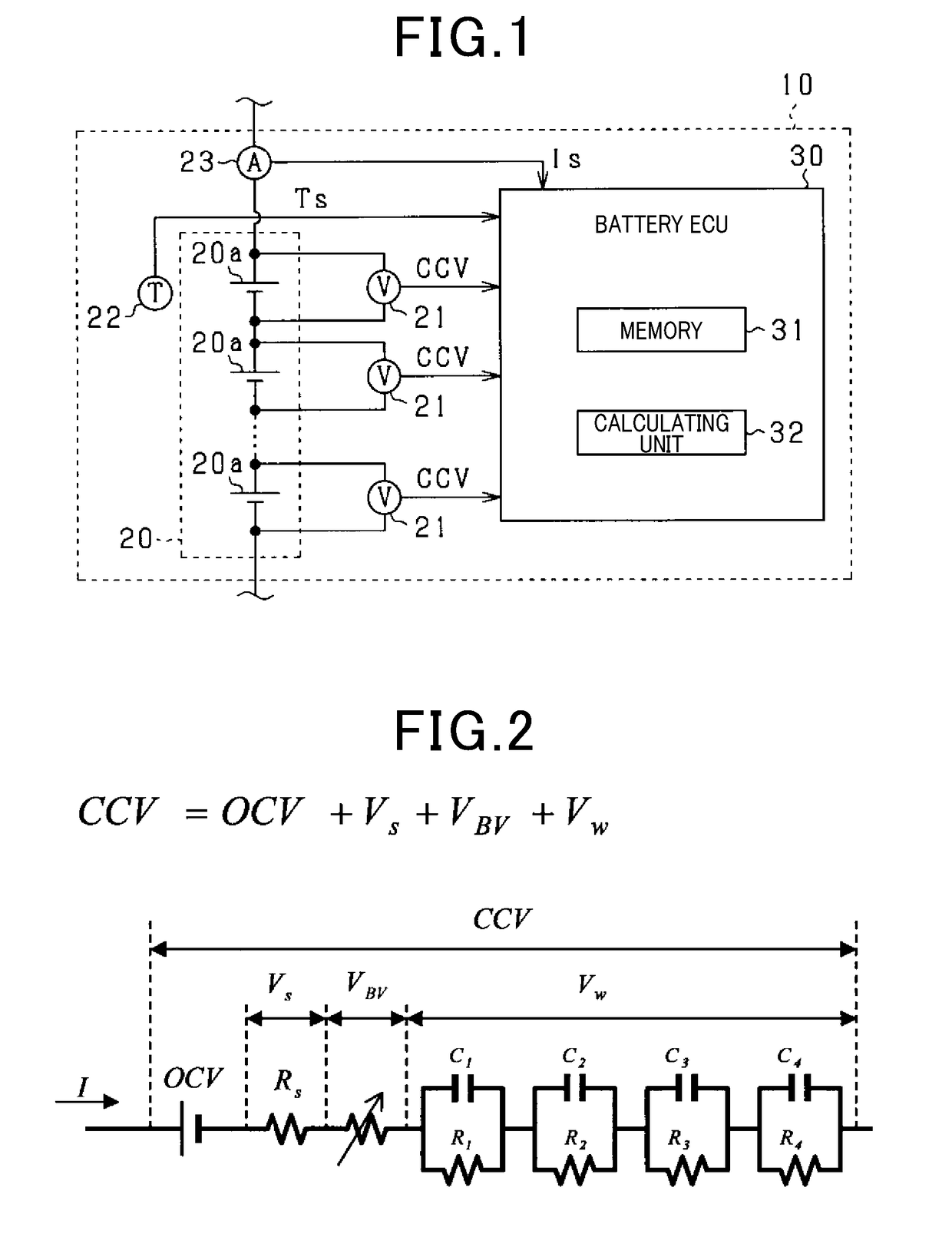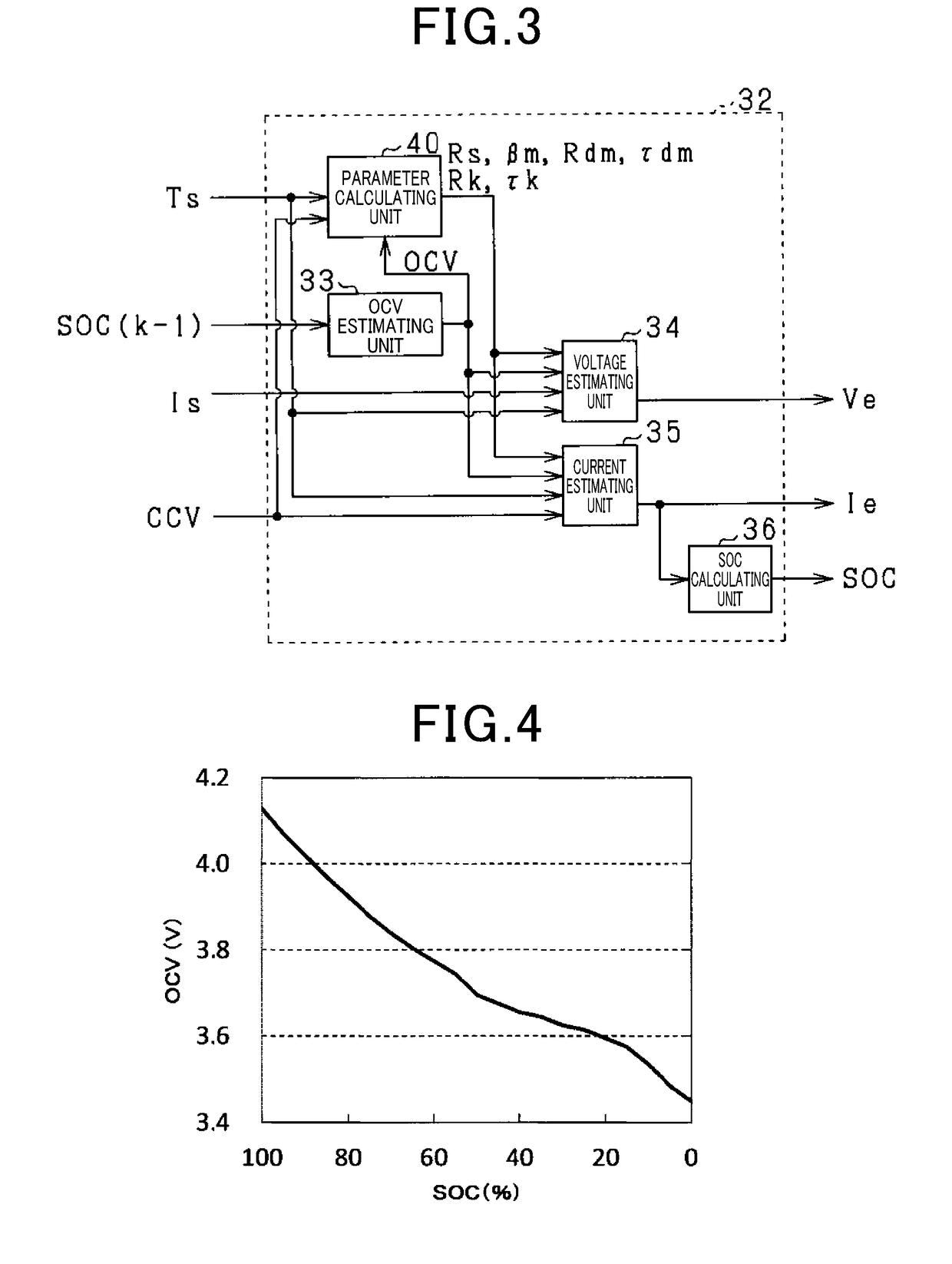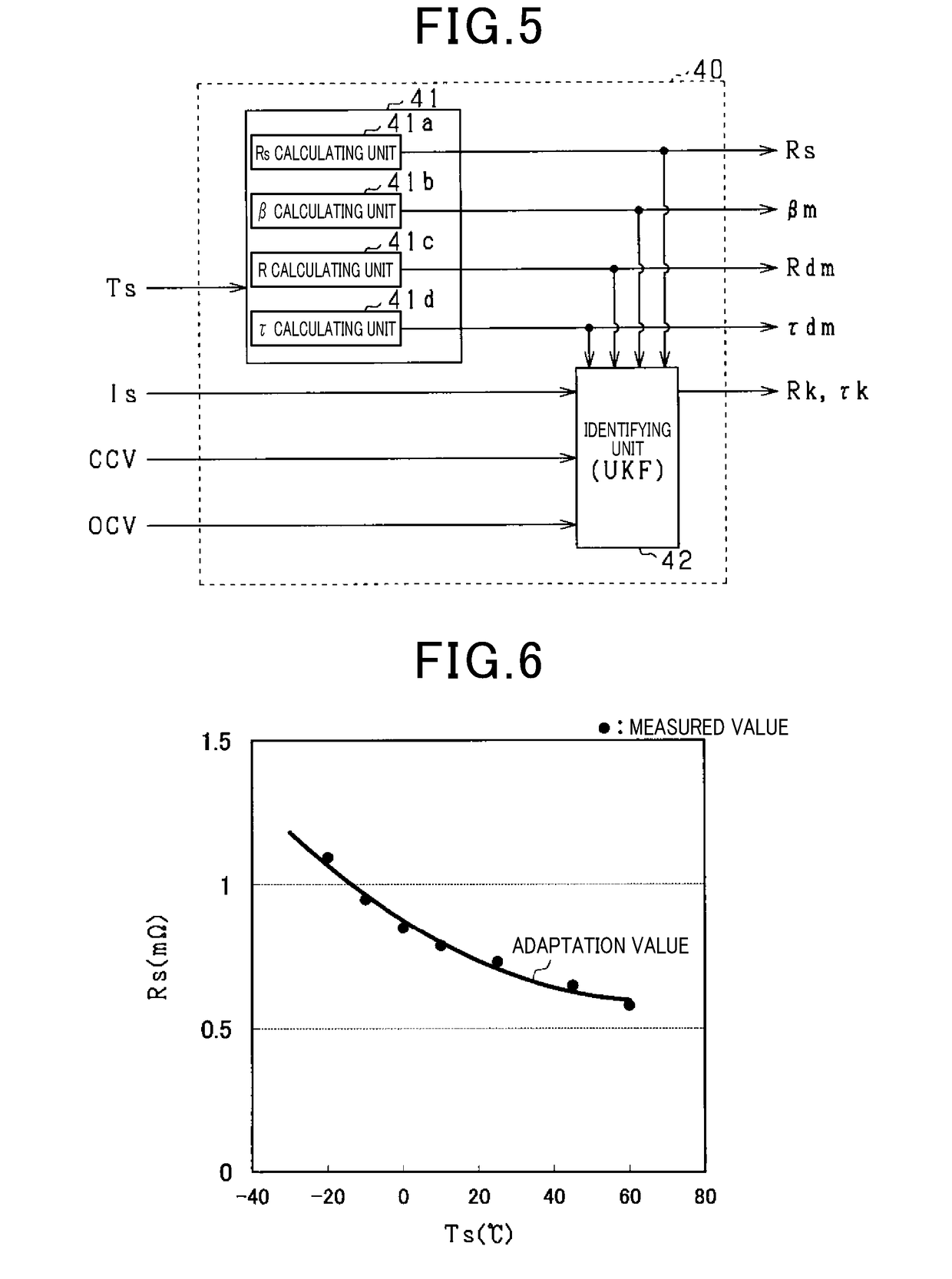Battery state estimating device
a state estimation and battery technology, applied in secondary battery servicing/maintenance, instruments, cad techniques, etc., can solve the problems of deteriorating accuracy of battery parameters identification, reduce risk, avoid the effect of reducing the identification accuracy of resistance parameters
- Summary
- Abstract
- Description
- Claims
- Application Information
AI Technical Summary
Benefits of technology
Problems solved by technology
Method used
Image
Examples
first embodiment
[0047]A first embodiment of a battery state estimating device according to the present disclosure will be described below with reference to the drawings. In the present embodiment, the battery state estimating device is applied to a vehicle.
[0048]As shown in FIG. 1, a battery pack 10 is mounted on a vehicle and includes a battery pack 20 and a battery ECU 30. The battery pack 20 is composed of a series connection of a plurality of battery cells 20a. In the present embodiment, the vehicle is assumed to be a vehicle equipped with a rotating electrical machine as its main engine, specifically, for example, a hybrid vehicle or an electric vehicle. The battery pack 20 exchanges electric power with the rotating electric machine or the like. The battery cells 20a are secondary batteries, and in the present embodiment, lithium ion secondary batteries are used. Note that the vehicle is not limited to a vehicle having a rotating electric machine as its main engine, but may be a vehicle that u...
second embodiment
[0134]The second embodiment will now be explained with reference to the drawings, focusing on its differences from the first embodiment. In the present embodiment, the calculation method of the SOC calculating unit 36 is changed. In the present embodiment, the detected current Is is inputted to the SOC calculating unit 36 shown in FIG. 3.
[0135]FIG. 23 is a block diagram of the SOC calculating unit 36 according to the present embodiment.
[0136]A deviation calculating unit 36a subtracts the detected current Is from the estimated current Ie calculated by the current estimating unit 35 and outputs the result. A gain multiplying unit 36b multiplies the output value of the deviation calculating unit 36a by the gain B. An adding unit 36c adds the detected current Is to the output value of the gain multiplying unit 36b. A calculating unit 36d calculates the SOC of the battery cell 20a based on the output value Ig of the adding unit 36c. In the present embodiment, the SOC is calculated by cha...
third embodiment
[0150]A third embodiment will now be explained with reference to the drawings, focusing on its differences from the first embodiment. In the present embodiment, in addition to the resistance parameter Rdm and the time constant parameter τdm, the charge parameter βm is sequentially identified and updated by the UKF. This is performed in view of the fact that the charge parameter may deviate from the appropriate value due to deterioration of the battery cell 20a or the like.
[0151]As shown in FIG. 26, the identifying unit 42 composing the parameter calculating unit 40 sequentially identifies a third correction coefficient βk as a charge correction coefficient for correcting the charge parameter βm. The third correction coefficient βk identified by the identifying unit 42 is sequentially stored in the memory 31. In FIG. 26, for the sake of convenience, the components that are shown in FIG. 5 are denoted by the same reference numbers.
[0152]The third correction coefficient βk is a paramet...
PUM
 Login to View More
Login to View More Abstract
Description
Claims
Application Information
 Login to View More
Login to View More - R&D
- Intellectual Property
- Life Sciences
- Materials
- Tech Scout
- Unparalleled Data Quality
- Higher Quality Content
- 60% Fewer Hallucinations
Browse by: Latest US Patents, China's latest patents, Technical Efficacy Thesaurus, Application Domain, Technology Topic, Popular Technical Reports.
© 2025 PatSnap. All rights reserved.Legal|Privacy policy|Modern Slavery Act Transparency Statement|Sitemap|About US| Contact US: help@patsnap.com



